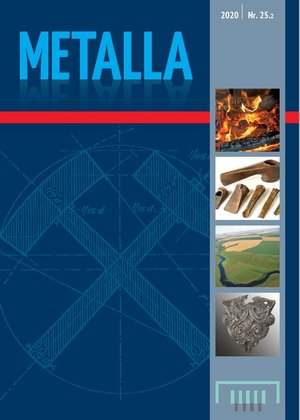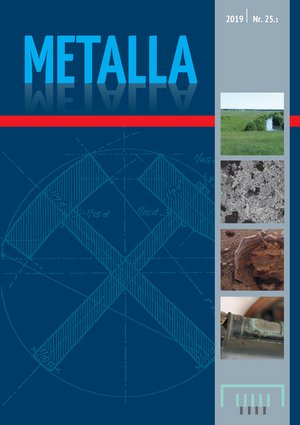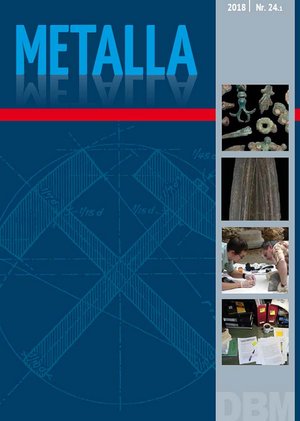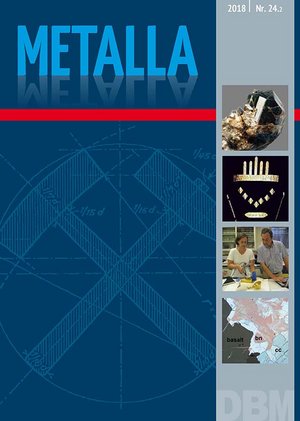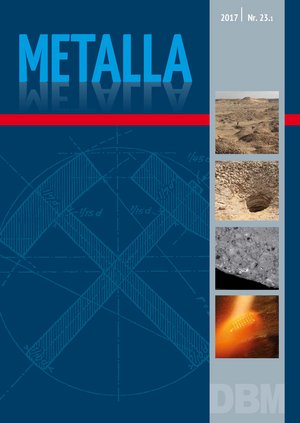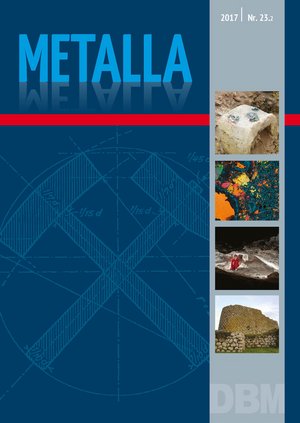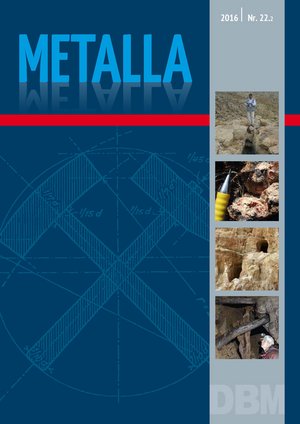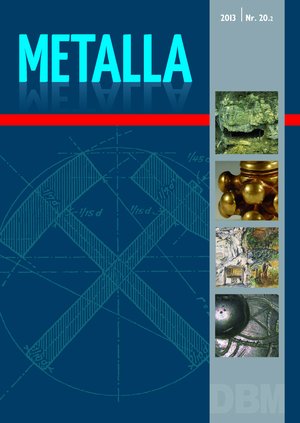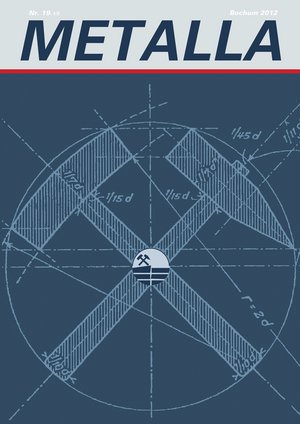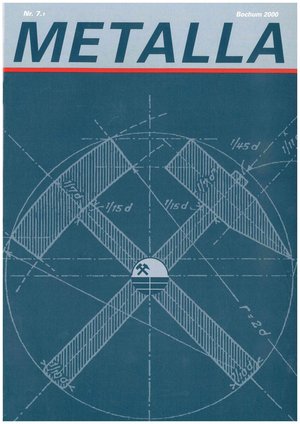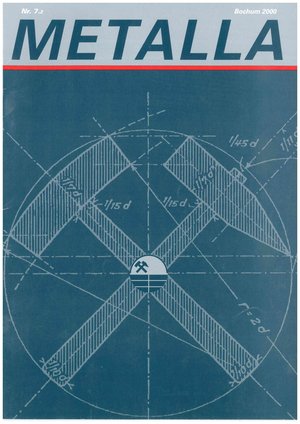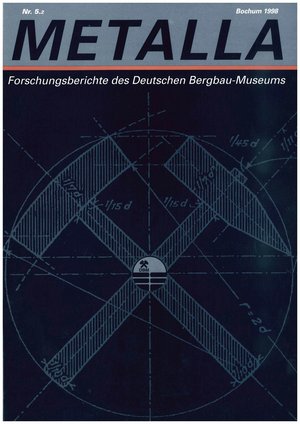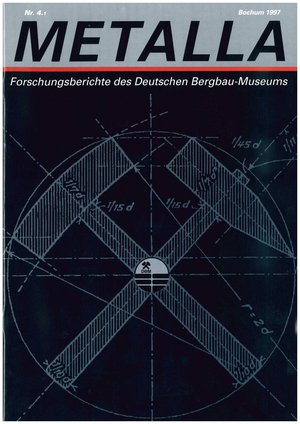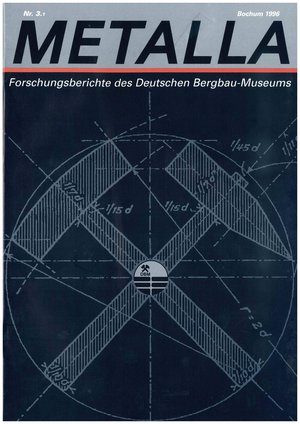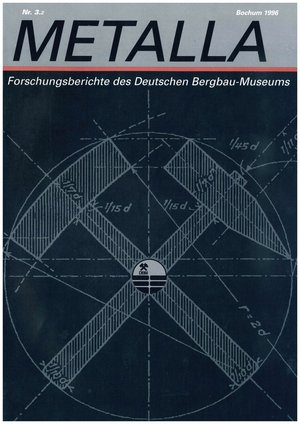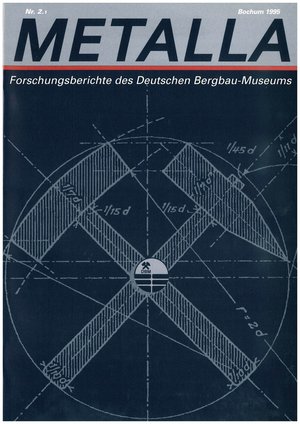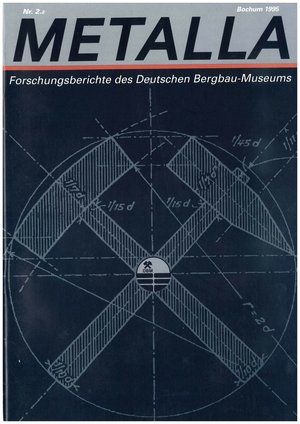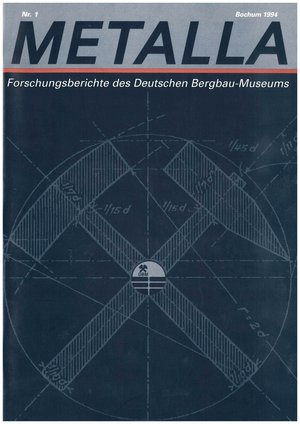Magazine archive
METALLA
This page gives you an overview of the issues of METALLA magazine published so far. Some issues of the archive are currently still being revised and will be updated or gradually published here.
Journal 25.2 of METALLA magazine is published in May 2021. As usual, the readership can expect a portfolio of diverse contributions and topics.
The current article discusses the Bronze Age metal evidence in Central Asia based on a vast study of metals of Kazakh origin in order to better understand what Chernykh once called the West-Asian-Metallurgical Province (WAMP). Based on typological studies it became obvious that typologies do not sufficiently help to understand the distribution patterns of Bronze Age metals in regard to their social nor their economic background. The authors therefore propose an anthropological and theoretical approach that allows the exploration of the practice of exchange within steppe communities based on provenance studies of metals using elemental and Pb-isotope data. These data have been analysed within a research project carried out with Kazakhstan partners between 2004 and 2014. For the first time, a selection of data are presented that support some of the general interpretations of exchange modes between the Petrovka Early Bronze Age and the Late Bronze Age. Especially during the second millennium, it seems that the exchange pattern of metals had changed from single high valued items to a larger scale trade, which included metal transport as well. It is suggested that although the practice of exchange modes between the steppe communities change to larger scale metal exchange during the 2nd half of the 2nd millennium BC, most of the social background still remained similar in comparison to the earlier periods.
In order to assess the fractionation of copper isotopes during smelting under reconstructed conditions, smelting experiments with chalcopyrite ore were conducted in built furnaces based on archaeometallurgical evidence from the Bronze Age Eastern Alps and ethnographic examples from Nepal. Two experimental series, S2 and S4 were chosen for analysis. Each series consisted of a number of roasting and smelting experiments with different experimental parameters, and both series yielded metallic copper. Each type of experiment, their outcomes, and observations made during them are described in detail to facilitate future experimental work. Both series differ significantly in their outcome. XRD analyses and chemical analyses were carried out to reveal the reasons for the observed differences. The chemistry of the obtained matte shows that roasting is pivotal for a successful smelting process and that two cycles of matte roasting and subsequent smelting can be sufficient to remove most of the sulphur and iron from the matte. Furthermore, different conditions in the shaft furnaces resulted in a more efficient oxidation of iron in series S4. During the subsequent smelting of the matte in the pit furnace, it was possible to extract larger amounts of metallic copper and sponge copper, as well as to produce a thin well-melted plate-like slag. The pit furnace did not always show clear traces of metallurgical activity and thus might not be identifiable in the archaeological records without chemical analysis of the pit lining and surrounding soil. Although more trials are needed to replicate the process, these experiments give a strong hint towards the reconstruction of the matte smelting process in the Bronze Age alpine area.
The article considers the results of the study of lead isotope composition of 38 non-ferrous artifacts discovered at medieval rural sites of the Suzdal Region (Kievan Rus’). The copper-alloy, silver and pewter artifacts were compared with reference data from geographically and temporally diverse medieval artifacts and ore deposits and revealed differing source regions and supply networks within and between metal types. The identification in some cases was difficult due to the conformity of the lead isotopic composition of deposits of some regions. The copper-alloys, represented mostly by crosses made of high-tin bronze, show close isotopic parallels to contemporary copper alloys from Southern Scandinavia, Westphalia and Lower Saxony. Since the copper alloys contain significant quantities of lead, this lead may have entered the metal by alloying with lead-tin alloys, by smelting mixed copper-lead ore, or through haphazard alloying with lead. The lead isotope ratios for nearly all copper alloys are consistent with deposits in Cornwall and Devon and remobilized ore from the Rhenish Massif. For silver and lead-tin alloy objects, lead isotope analyses point to wide ranging sources. Most silver objects are consistent with mid-to-late 10th century silver stocks circulating in the Baltic area and 10th century Volga- Bulgar silver dirham imitations probably representing mixtures of 9th-10th century Islamic silver. The silver shows a heavy reliance on 10th century mixed stocks and there are little indications of Central and Western European silver, which was common in the 11th century Baltic region. The pewter and lead, however, indicate other sources. Lead isotope ratios are consistent with sources connected to Mediterranean and Baltic networks, some being consistent with sources in England, but it is possible that the lead found in some pewter objects could come from the Olkusz lead district in southern Poland. The presented results of the lead isotope composition of Suzdal objects of the 10th–13th centuries indicate that the method is promising for the identification of metal sources for medieval materials. It expands the opportunities to identify ways in which raw materials were obtained in the northeastern territory of old Russia and identify economic and cultural contacts both near and far.
Order via: metalla@bergbaumuseum.de or +49 234 282538-29
Price: A single issue costs 20 €.
Subscription price: 15 € per issue incl. postage and packing.
If you or your institution would like to subscribe to METALLA or enter into a book exchange with the Deutsche Bergbau-Museum Bochum, please use the contacts below.
The archive is currently under construction. Soon you will have access to all issues of METALLA that have been published so far.
